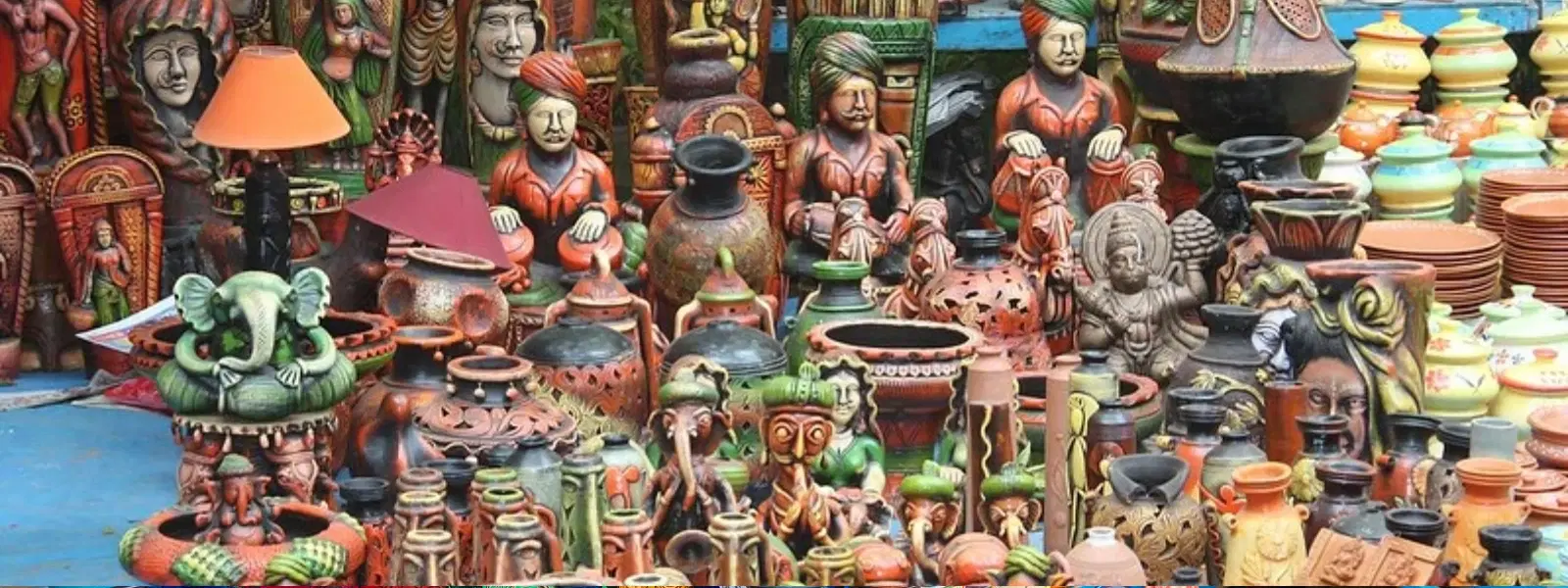
Hotels
•04 min read

Bishnupur in West Bengal enchants visitors with its breathtaking terracotta art. The intricate designs, vibrant colors, and unique textures evoke a sense of timeless beauty that transports you to a world where art and history merge. At the heart of this tradition is the iconic Bankura horse, a symbol of cultural pride and enduring artistic heritage. In this blog, we uncover 7 fascinating facts about Bishnupur Bankura terracotta significance WB, revealing the historical roots, craftsmanship, symbolism, and enduring legacy of this traditional art form.
Terracotta art in Bengal can be traced back to ancient times when it was part of religious rituals. The use of clay to depict deities and mythological scenes gradually evolved into a decorative art form. Bishnupur emerged as a hub of talent and creativity, where artists refined their skills to produce art that was rich in cultural narratives and spiritual symbolism. The tradition of working with terracotta not only enhanced religious practices but also became a medium of storytelling, conveying the region's historic ethos.
During the medieval period, the Mallabhum kingdom played a pivotal role in nurturing terracotta art. Royal patronage led to the construction of numerous temples adorned with detailed terracotta panels. These temples, with their intricate carvings and artistic depictions of folklore, documented the societal values and myths of the time. Bishnupur's golden era remains a testament to the deep-seated relationship between art, spirituality, and history, according to local historians.
The creation of the Bankura horse is an art in itself. Skilled Kumbhokars, or traditional potters, start with finely prepared clay, which is molded with care and precision. After the shaping process, the pieces undergo a meticulous drying and firing procedure that transforms simple clay into a durable work of art. This dedication to detail ensures that each Bankura horse is a unique masterpiece, embodying the artisanal spirit of Bishnupur terracotta art.
The Bankura horse goes beyond mere aesthetics. It is a powerful emblem of strength, prosperity, and cultural identity. Often featured in rural rituals and Dharmathakur worship, these terracotta figures carry symbolic meanings that resonate with local traditions and beliefs. They celebrate the continuity of the West Bengal terracotta tradition, reminding us of the intrinsic link between art and community.
Bishnupur is home to some of the most stunning terracotta temples in India. The temples are celebrated for their elaborate panels that depict mythological stories, everyday life, and the region's natural beauty. Renowned structures like Rasmancha and Jor Bangla stand as fine examples of this art form, where every detail is carefully etched to bring stories to life in clay.

These temples were more than just places of worship; they were vibrant centers of cultural expression and social life. The terracotta art decorated the walls and ceilings, serving as a bridge between the divine and the mortal. Over centuries, these artistic marvels helped sustain a community’s spiritual identity by integrating art with religious devotion.
Efforts to preserve this ancient craft are visible in Bishnupur today. Government initiatives and the Geographical Indication (GI) tagging have helped protect the integrity of Bishnupur terracotta art. These measures ensure that the knowledge and skills of traditional artisans are passed down through generations, keeping the legacy alive for future enthusiasts.
In a modern era that values both tradition and innovation, Bishnupur terracotta art has evolved to meet contemporary tastes. Artisans now craft decorative pieces and souvenirs that resonate globally, while still honoring the timeless techniques of their forebearers. This blend of old and new has expanded the art’s reach far beyond local boundaries, captivating audiences around the world.
The Bankura horse is not just a local icon but has earned global recognition as a symbol of Indian handicrafts. It is often featured in exhibitions and art fairs worldwide, showcasing the timeless appeal of Bishnupur Bankura terracotta art.
Bishnupur terracotta art distinguishes itself through its intricate detailing and deep-rooted cultural narratives. Unlike other pottery forms in India, the art of Bishnupur encapsulates both aesthetic allure and a historical journey. Each piece tells a story, making it an indispensable piece of West Bengal’s traditional art of Bengal.

The survival of this art form is largely due to the collective efforts of local communities. Skills and traditions that have been honed over centuries are passed down from one generation to the next. This intergenerational transfer of knowledge not only sustains the craft but also strengthens the cultural fabric of the region.
The Bankura horse is renowned for its terracotta craftsmanship, symbolizing strength and prosperity in West Bengal's cultural heritage.
Terracotta art in Bengal dates back to ancient times, evolving from religious rituals to decorative and architectural art forms, with Bishnupur as a key center.
Bankura is celebrated for its Baluchari sarees and terracotta art, both of which reflect the region's rich cultural and artistic traditions.
You can purchase Bankura horses and terracotta artifacts from local artisans in Bishnupur or through online platforms specializing in handicrafts.
The Bankura horse is often used in rural rituals, particularly in Dharmathakur worship, symbolizing devotion, prosperity, and protection.
Bishnupur Bankura terracotta art is a rich mosaic of history, culture, and artistry. Through its ancient temples, the skilled craftsmanship of the Bankura horse, and the enduring community spirit, Bishnupur narrates a compelling story of heritage and creativity. This exploration not only helps us understand the significance of terracotta in Bishnupur but also invites us to continue cherishing and supporting local art forms that have stood the test of time.